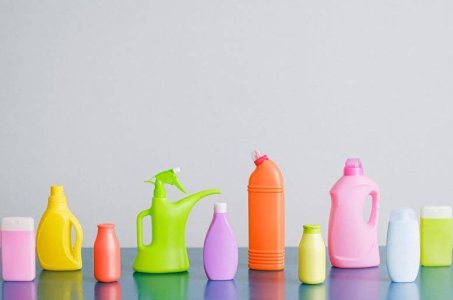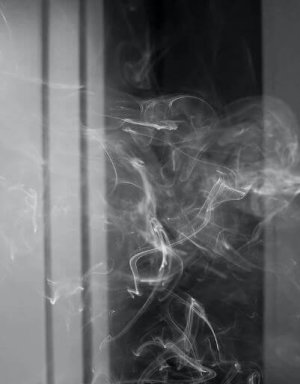Discover the shocking truth about using bleach in your cleaning routine
- Replies 8
When it comes to cleaning, DIY hacks and tips are a dime a dozen. We’ve written about them in the past, and we’re sure you’ve come across a couple of at-home cleaning solutions yourselves while browsing the internet.
But researching the legitimacy or effectiveness of a cleaning tip should be a priority. This is why here at the SDC, we check if DIY hacks are safe before sharing them.
Because if we don’t, well… Let’s just say we don’t want to end up like this young woman who learnt the hard way that these two cleaning chemicals should never be mixed.
Blending certain cleaning solutions can cause serious repercussions. This is what Samantha, who goes by @silkalmondmilk_ers on TikTok found out while she was staying at her grandparents’ house during the holidays.
‘I accidentally cleaned the kitchen with bleach and vinegar and now we’re all stuck in the same room on the phone to poison control,’ she captioned.
Luckily, Samantha and her family were able to move away from the area and quickly locked themselves in one room before calling the Poisons Information Line for advice.

Should this happen to you, remember to open windows and doors to ventilate the room and move yourself and others to another well-ventilated spot in the house.
On its own, vinegar is a good cleaning agent for removing pesky stains and grime. That’s because vinegar has antibacterial, antifungal, and antiviral qualities. Distilled white vinegar has about 5-8% acetic acid, making it an excellent tool for disinfecting surfaces. However, in high concentrations, vinegar can cause skin irritation and eye damage, which is why in DIY cleaning hacks vinegar is always diluted with water.
Bleach is also a highly-effective stain remover and great at disinfecting surfaces. It has many different forms, but the most common one that’s used as a cleaning tool is sodium hypochlorite – and this is also what makes it dangerous.
Because by itself, bleach can damage your skin, but when inhaled it can become potentially lethal, especially when mixed with other household cleaners like vinegar. When combined, the two chemicals release toxic chlorine gas, which is extremely dangerous to our bodies.
It’s so powerful that Germany used it during World War I as a chemical weapon.
Samantha’s viewers were also shocked to discover that bleach and vinegar shouldn’t be mixed.
‘I mixed baking soda, vinegar, and bleach to clean the bathroom. I was feeling dizzy a bit afterwards but I’m glad I’m still alive,’ one shared.
‘I didn’t even know this. Thank you for allowing me to learn from your mistake,’ another replied.
‘You learn something new every day,’ a third wrote.
You can watch Samantha’s video below:
Breathing in toxic gas can be extremely harmful and the effects can begin within seconds. The toxic gas gives off a distinctly pungent and irritating odour, so if you smell something strong after mixing cleaners, vacate the area immediately.
The symptoms of toxic gas poisoning included: airway irritation, nausea, vomiting, watery eyes, wheezing, difficulty breathing, sore throat, cough, chest tightness, eye, and skin irritation.
But the severity of symptoms you develop depends on how concentrated it is, typically measured in parts per million (ppm) and how long you inhale it:
Generally, just don’t mix bleach with anything besides water.
To use bleach as a cleaning agent safely, dilute it with water first. If you are using it in your washing machine for your laundry, you can pour some in and let the water dilute it as the machine fills. The ratio you should use is 1 tablespoon of bleach to 3.5 litres of water.
Another tip is to use a cleaner on the surface you want to clean first before using a bleach solution to disinfect the area. Leave the bleach solution there for about five minutes and then rinse it off before air drying the surface.

Don’t use hot water with bleach! This can still release chlorine gas. Be mindful of the temperature of the water when rinsing off bleach solutions.
Also, make sure you use proper ventilation when cleaning or disinfecting with bleach. After using it, store it safely and away from the reach of children.
Lastly, here are some areas to avoid using bleach:

So next time you’re cleaning with bleach, make sure you’re taking the right safety precautions. If you ever find yourself in a similar situation as Samantha, call the Poisons Information Line on 13 11 26. Call triple zero (000) immediately if you or someone you know stops breathing, slips into a coma, or has a seizure or a severe allergic reaction to suspected poisoning.
And members, if you have any other tips or stories to share about cleaning with bleach, then please let us know in the comments below!
But researching the legitimacy or effectiveness of a cleaning tip should be a priority. This is why here at the SDC, we check if DIY hacks are safe before sharing them.
Because if we don’t, well… Let’s just say we don’t want to end up like this young woman who learnt the hard way that these two cleaning chemicals should never be mixed.
Blending certain cleaning solutions can cause serious repercussions. This is what Samantha, who goes by @silkalmondmilk_ers on TikTok found out while she was staying at her grandparents’ house during the holidays.
‘I accidentally cleaned the kitchen with bleach and vinegar and now we’re all stuck in the same room on the phone to poison control,’ she captioned.
Luckily, Samantha and her family were able to move away from the area and quickly locked themselves in one room before calling the Poisons Information Line for advice.
Tip
Should this happen to you, remember to open windows and doors to ventilate the room and move yourself and others to another well-ventilated spot in the house.
On its own, vinegar is a good cleaning agent for removing pesky stains and grime. That’s because vinegar has antibacterial, antifungal, and antiviral qualities. Distilled white vinegar has about 5-8% acetic acid, making it an excellent tool for disinfecting surfaces. However, in high concentrations, vinegar can cause skin irritation and eye damage, which is why in DIY cleaning hacks vinegar is always diluted with water.
Bleach is also a highly-effective stain remover and great at disinfecting surfaces. It has many different forms, but the most common one that’s used as a cleaning tool is sodium hypochlorite – and this is also what makes it dangerous.
Because by itself, bleach can damage your skin, but when inhaled it can become potentially lethal, especially when mixed with other household cleaners like vinegar. When combined, the two chemicals release toxic chlorine gas, which is extremely dangerous to our bodies.
It’s so powerful that Germany used it during World War I as a chemical weapon.
Samantha’s viewers were also shocked to discover that bleach and vinegar shouldn’t be mixed.
‘I mixed baking soda, vinegar, and bleach to clean the bathroom. I was feeling dizzy a bit afterwards but I’m glad I’m still alive,’ one shared.
‘I didn’t even know this. Thank you for allowing me to learn from your mistake,’ another replied.
‘You learn something new every day,’ a third wrote.
You can watch Samantha’s video below:
Breathing in toxic gas can be extremely harmful and the effects can begin within seconds. The toxic gas gives off a distinctly pungent and irritating odour, so if you smell something strong after mixing cleaners, vacate the area immediately.
The symptoms of toxic gas poisoning included: airway irritation, nausea, vomiting, watery eyes, wheezing, difficulty breathing, sore throat, cough, chest tightness, eye, and skin irritation.
But the severity of symptoms you develop depends on how concentrated it is, typically measured in parts per million (ppm) and how long you inhale it:
- 0.1 to 0.3 ppm: At this level, humans can smell the pungent odour of chlorine gas in the air.
- 5 to 15 ppm: A concentration over 5 ppm irritates the mucus membranes in your mouth and nose.
- Over 30 ppm: At a concentration higher than 30 ppm, chlorine gas can cause chest pain, shortness of breath, and coughing.
- Above 40 ppm: Concentrations higher than 40 ppm can cause potentially dangerous fluid build-up in your lungs.
- Above 430 ppm: Breathing in more than 430 ppm of chlorine gas can be lethal within 30 minutes.
- Above 1,000 ppm: Inhaling chlorine gas above this level can be deadly immediately.
Generally, just don’t mix bleach with anything besides water.
To use bleach as a cleaning agent safely, dilute it with water first. If you are using it in your washing machine for your laundry, you can pour some in and let the water dilute it as the machine fills. The ratio you should use is 1 tablespoon of bleach to 3.5 litres of water.
Another tip is to use a cleaner on the surface you want to clean first before using a bleach solution to disinfect the area. Leave the bleach solution there for about five minutes and then rinse it off before air drying the surface.
Tip
Don’t use hot water with bleach! This can still release chlorine gas. Be mindful of the temperature of the water when rinsing off bleach solutions.
Lastly, here are some areas to avoid using bleach:
- Wooden surfaces: Even diluted with water, bleach solutions can leave stains and raise the grain in timber. So, unless you plan on changing the colour of your wooden furniture, don’t use bleach on them.
- Stainless steel: Bleach is corrosive to metals, including stainless steel. Repeated use can result in pitting and staining.
- Granite or stone benchtops: Bleach can dull the finish on granite benchtops and might even change the colour of your pieces completely.
Key Takeaways
- TikToker Samantha accidentally mixed bleach and vinegar and had to call a Poisons Information Line for advice.
- It is true that the two cleaners should not be mixed because they can produce toxic gas.
- Bleach is a disinfectant and should not be used to clean dirt from surfaces.
- Bleach should not be used on wooden surfaces, stainless steel, granite or stone benchtops because it can cause discolouration and damage.
And members, if you have any other tips or stories to share about cleaning with bleach, then please let us know in the comments below!









